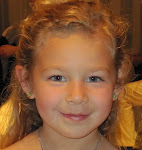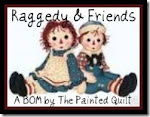Saw something that inspired me to totally come up with a new project for March embroidery club. I think it turned out pretty cute, even if I do say so myself! It's a table runner with the bunny face embroidery design that I digitized.
Here's the supply list for March Embroidery Club on March 28th.
My plan is to package this as a kit with the embroidery design and offer it for sale in the store. That way those that can't make it to class and at least make the project at home. Of course, if you take the class the embroidery design and the pattern instruction is included with the class, and will be less than the price of the kit.
Don't you love batiks! Well, these are just in so Suzanne and Amanda have put together some fabric kits just for this project:
kit includes the fat eighths so you can select your preference for backing and binding.
Make your selection from the sbelow and then contact Strawberry Patches to reserve yours!
Don't the colors remind you of those wonderful Easter egg colors? Just perfect for this project.
I firmly believe one can't have too many pairs of scissors. The new heritage brand embroidery scissors that I found have come in at the store. Amanda ordered a few to see how we liked them. Silly me I forgot to buy a pair on Saturday. So, if you want a pair give the store a call so they can put your name on one. This is the brand that has the blue cushy around the finger holes so cutting is more comfortable. We also have a new applique scissor coming for us but those have not arrived yet - they're coming from a different vendor but I expect them next week.
We have new fabric in as of Friday that would be perfect for this quilt. I'll probably offer the class again in the fall if you missed out on taking it this time around. The fabric is by Moda (surprise!) and the line is called Patissere from Fig Tree Quilts. The line has 2 or 3 beautiful stripes that would be an excellent choice for the sashing in QAD, not to mention others that would be an excellent choice for the remainder of the different pieces needed.
“Proper Needle Selection” Released March 6, 2009
by Denise Gartner
When you choose a needle for embroidery it should be the smallestsize that will accommodate the weight of your thread and the materialyou are stitching on.
The reason we choose the smallest sized needle is so that it willform the best stitches when embroidering. Embroidery stitches arevery small, very close together and most designs are comprised ofmany stitches.
As your needle punches the material and stabilizer to form the firststitch, it then rises back up, then back down again to form the nextstitch. There is a small amount of space or material and stabilizerleft in between the first stitch and the next stitch and subsequentlyin between all the stitches.
If you use a larger needle than is necessary, not only is the holethe needle makes larger than necessary, but the amount of materialand stabilizer between stitches is lessened, meaning there is also lessfor the stitches to hold onto. This can cause finished design problems,weakening the material and stabilizer that you are stitching on. It canalso cause thread problems while stitching.
Organ Needles for Home Machines offers sharp points and ball points.Both of these needle types come in regular chrome and also titaniumcoated chrome (Perfect Durability). Titanium or Perfect Durabilityneedles are made to last longer before the points wear down.
Remember to use sharps for woven fabrics and ball points for knit fabrics.
For 40 weight embroidery thread use any of the following chrome needles:Organ Regular Point (Sharp) Needles 15×1, HAx1, 705. Organ Ball PointNeedles 15×1, HAx1 BP.
For 40 weight embroidery thread use the following Titanium (PerfectDurability) Needles: Organ Regular Point (Sharp) Titanium Needles 15×1,HAx1 PD. Organ Ball Point, Titanium Needles 15×1, HAx1 BP PD.
For metallic or decorative threads use the following Chrome Needles:Organ Regular Point (Sharp) Large Eye Needle 15×1 ST, 705H-E. OrganBall Point Large Eye Needle 15×1 ST BP.
For metallic or decorative Threads use the following Titanium (PerfectDurability) Needles: Organ Regular Point (Sharp) Large Eye TitaniumNeedles 15×1ST PD. Organ Ball Point, Large Eye, Titanium Needles 15×1STBP PD.
Schmetz Needles:
*I know that Schmetz used to color code their needles by type, but I’mnot sure they do ‘now’, so you may want to check.
For 40 weight embroidery thread use the following Chrome Needles:Schmetz Embroidery Needle Packs are marked as - Embroidery Needle130/705 H-E. A Red Colored Horizontal Band located just below thebottom of the shank of the needle indicates that it is an embroideryneedle.
For metallic or decorative threads use the following Chrome Needles:Metallica Needle - marked as - Metallica 130 MET. *The packages ofMetallica Needles that I have here are not color coded.
For embroidery on knit fabrics with Schmetz Needles I would recommendtrying the following needles:
Universal Needle 130/705H-15×1 size 12/80. The Universal Needle has aslightly rounder point that is intended for use with both wovenand knit fabrics. I have used this type of needle for both knits andfree standing lace (FSL).
Needle Sizes:
For most fabric weights a size 75/11 or an 80/12 embroidery needleshould work just fine. If you’re embroidering on very fine materialsuch as silk, you may want to use a smaller needle, perhaps a size 70/10.
If you are embroidering free standing lace, try using a 75/11 or an 80/12sharp point needle (but not any larger) since free standing lace is madeup of many layered stitches, thus using the smallest needle possible isthe best choice so your designs stitch properly.
Ball Point Needles:
The reason we use ball points for knit type fabrics is because it isnecessary for the more rounded needle point to push the fibers of theknit fabric ‘apart’ when it goes through the material to form a stitch.If we incorrectly selected a sharp, we would actually be ‘cutting’ thefibers when our needle passed through the fabric, which is of courseundesirable because it would cause holes and/or runs in knit fabrics.
I have heard from a couple of professional embroiderers that they useball point needles in their commercial machines for all fabrics with theexception of leather and other specialty fabrics (here again researchingfirst is probably best to insure you are actually selecting the correctneedle for your needs).
Ultimately, the decision is yours, so consider testing some of these needletheories to see what works best for you and your designs!
Hope this helps answer some of the needle questions.
This month the new alphabe is Lattice 1 and the L letter is free.

 BUNNYHILL
BUNNYHILL








